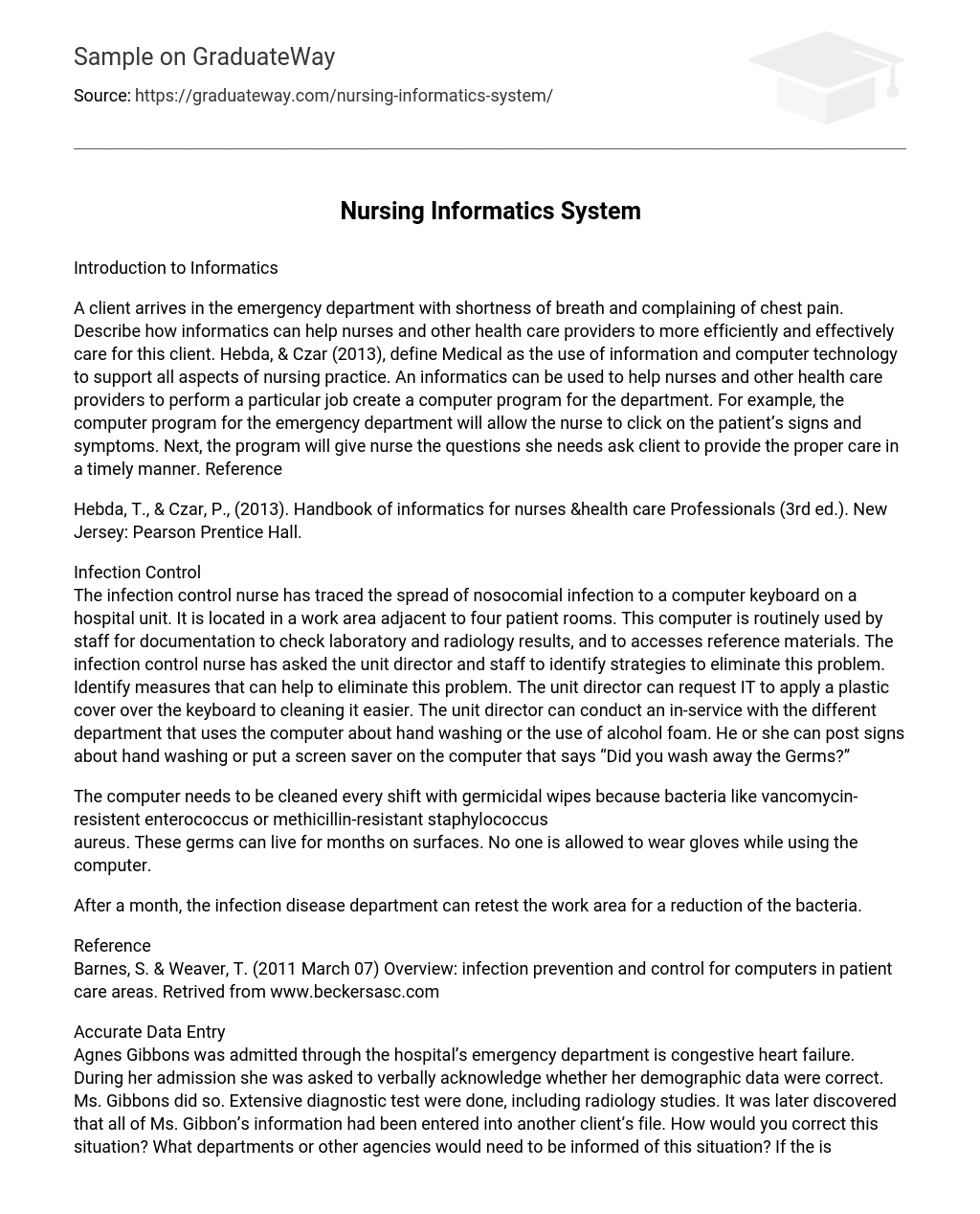Introduction to Informatics
Informatics can significantly enhance the efficiency and effectiveness of care for clients in the emergency department who present with symptoms such as shortness of breath and chest pain. Hebda, & Czar (2013) define Medical informatics as the use of information and computer technology to support all aspects of nursing practice. One application of informatics is the development of computer programs specifically designed for the emergency department. Such programs enable nurses and other healthcare providers to easily assess a patient’s condition by simply clicking on the corresponding signs and symptoms. Consequently, the program guides the nurse in asking the necessary questions to facilitate timely and appropriate care. References
The source of the information is a book called “Handbook of informatics for nurses & health care Professionals (3rd ed.)” written by Hebda, T. and Czar, P. It was published in New Jersey by Pearson Prentice Hall in 2013.
Infection Control
The infection control nurse has determined that a computer keyboard in a hospital unit is responsible for spreading nosocomial infection. This keyboard is located in a work area adjacent to four patient rooms and is regularly used by staff for documentation, checking laboratory and radiology results, and accessing reference materials. The infection control nurse has asked the unit director and staff to suggest strategies for resolving this issue. Recommended measures include requesting IT to apply a plastic cover on the keyboard to facilitate easier cleaning, conducting an in-service with various departments that use the computer to educate them about hand washing or the use of alcohol foam, and posting signs or using a screen saver on the computer that reminds users to wash their hands and eliminate germs.
The computer must be cleaned with germicidal wipes after every shift to eliminate bacteria such as vancomycin-resistant enterococcus or methicillin-resistant staphylococcus aureus, as these germs can survive for months on surfaces. Additionally, wearing gloves while using the computer is strictly prohibited.
After one month, the infection disease department has the ability to retest the work area to check if there has been a decrease in bacteria.
Reference
Barnes, S. & Weaver, T. (2011 March 07) Overview: infection prevention and control for computers in patient care areas. Retrieved from www.beckersasc.com
Accurate Data Entry
Agnes Gibbons was admitted to the hospital’s emergency department with congestive heart failure. During her admission, she verbally confirmed the accuracy of her demographic data. Unfortunately, it was later discovered that all of Ms. Gibbons’ information had been mistakenly entered into another patient’s file. To rectify this situation, several steps need to be taken and multiple departments or agencies need to be notified. If the data was entered electronically, corrections must be made in various locations. First, the supervisor of the emergency department should be informed of the error. Additionally, the business office needs to be notified so that a proper account can be created for the patient and any charges mistakenly applied to the other patient can be cancelled.
Each department must be informed to bill the appropriate patient for the test. Additionally, any other department that interacts with the hospital’s medical records must be notified, as changes in the system may not be updated automatically. Lastly, the supervisor should review the correct procedure for verifying data with a client, as a mistake like this could potentially cause financial issues for another client. Reference
Hebda, T., & Czar, P. (2013). Handbook of informatics for nurses & healthcare professionals (5rd ed.). New Jersey: Pearson Prentice Hall.
As nurses, our responsibility is to educate patients about their disease process. If we fail to teach them, how will they learn to manage the disease?





